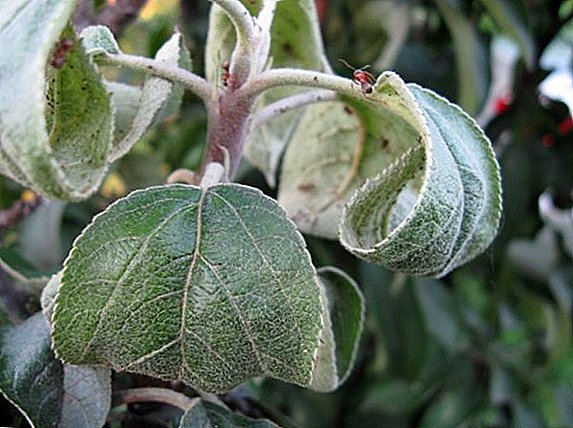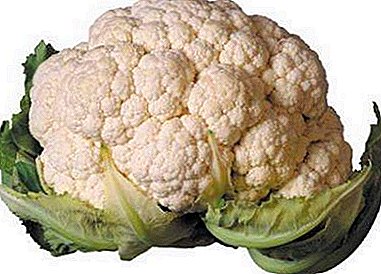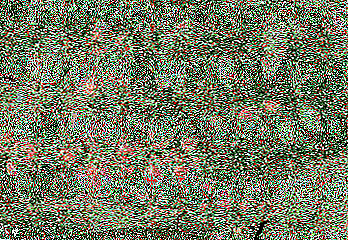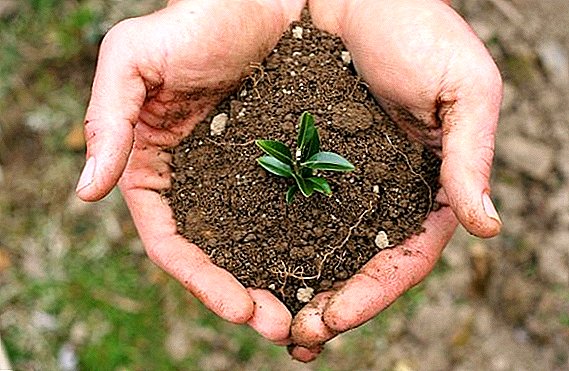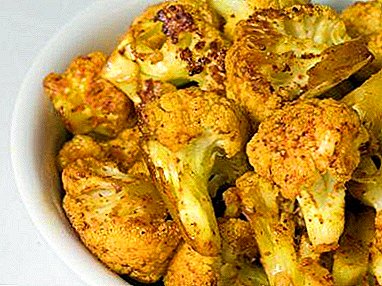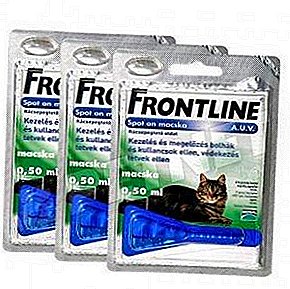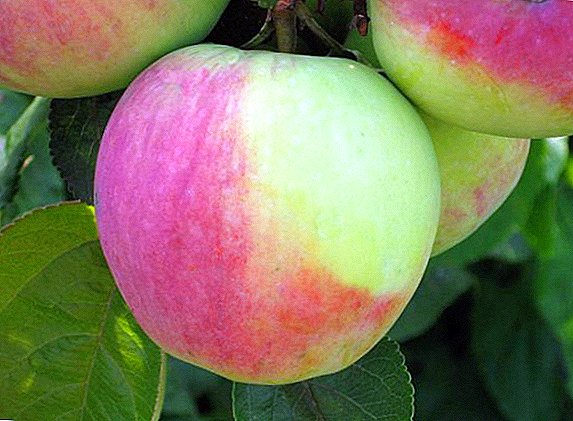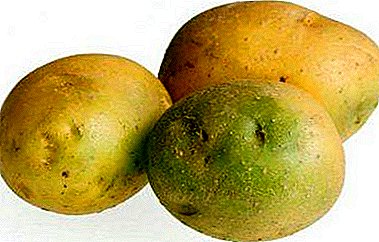
Potatoes are a popular vegetable that can be stored for the entire winter. However, if you violate the conditions of storage, you can get your supplies from the cellar and see that they are green, covered with spots, or even turned into mucous gruel.
Like a summer resident who has set aside potatoes for seeds, and a consumer who wishes to have a food supply for food, one has to deal with different types of spoilage of potatoes.
About why during storage potatoes can turn green, blacken from the inside and germinate, and how to properly store it is described in our article.
Why are potatoes green?
Potatoes are capable of photosynthesis, like all plants. Usually potato tubers are in the ground, almost in complete darkness. However, if they are exposed to light, the chlorophyll in the peel will react with carbon dioxide and water, due to which the potatoes will turn green.
By itself Chlorophyll is harmless to health, but in greened tubers the concentration of solanine increases. This substance is poisonous to humans, so it’s dangerous to eat such potatoes. It will even taste bitter. It can be used for seedlings, but if potatoes are stored as food, they will have to be thrown away.
To avoid this problem, potatoes must be stored in a dark place. Suitable cellar, pantry or insulated balcony. The main thing - to close it from the penetration of sunlight. A small amount of potatoes can be kept in the refrigerator, away from the freezer.
Why does it turn black inside?
There are a number of reasons why potatoes can turn black inside - from improper fertilizer during cultivation to violation of storage conditions. Blackness can be caused by various diseases with which a plant can become infected from the soil or from other plants.
 Some varieties of potatoes, in principle, do not lie for a long time. They must be eaten in early autumn. If the potatoes are watered too much, it can darken due to the formation of rot. Perhaps the harvest was collected too early, and on the tubers did not have time to form a sufficiently dense crust, able to protect against disease.
Some varieties of potatoes, in principle, do not lie for a long time. They must be eaten in early autumn. If the potatoes are watered too much, it can darken due to the formation of rot. Perhaps the harvest was collected too early, and on the tubers did not have time to form a sufficiently dense crust, able to protect against disease.
If the cultivation and harvesting of potatoes took place according to all the rules, then the happy owner of a large number of high-quality potatoes should be able to save it.
- Potatoes require good ventilation and a temperature of + 2 ... +6 degrees.
- Before storing the tubers for storage, it is recommended to clean them of soil residues in order to reduce the risk of infection with a fungus.
- It is better to put the harvest in boxes with gaps between the boards or boxes with holes.
- It is recommended to install them on pallets to improve ventilation.
IMPORTANT! Regardless of whether the potatoes were washed or the soil was simply mechanically shaken off, it should be laid dry in the storage. Sometimes it is recommended to dry it for some time in the sun for additional disinfection with rays.
Causes of germination
Potato tuber is a variant of the kidney, filled with nutrients. His goal - to germinate in the spring and form a new plant. This process starts when it gets warm enough. Sprouted tubers become less nutritious, since starch is consumed for germination.
If during storage potatoes sprouted, it means that the storage is too warm. Elevated temperatures may also occur deep in stocks if ventilation is insufficient. Sprouts are dangerous to eat, so they will have to be cut. Potatoes need to sort out and lay so that the optimum amount of air enters.
So, to prevent germination, the room with the potatoes should be well ventilated and be cool (but not too cold, otherwise the flesh will begin to darken).
Diseases
There are more than 20 potato ailments caused by fungi and microorganisms. Infection can be transmitted through the soil, with the help of the neighborhood with diseased plants and through the repository, if there was a diseased crop a year before. Here are some common diseases:
- wet bacterial rot;
- fusarium dry rot;
- ring rot;
- scab;
- darkening of the pulp;
- glandular spotting;
- hollowness of potatoes.
Let us examine in detail:
- As the name suggests, wet rot caused by bacteria. They get into the potato through peel damage, after which wet dark spots are formed. Gradually, all the pulp turns into an unpleasant mucous mass. High temperatures and humidity at the storage site, combined with a lack of ventilation, contribute to the rapid development of this disease.
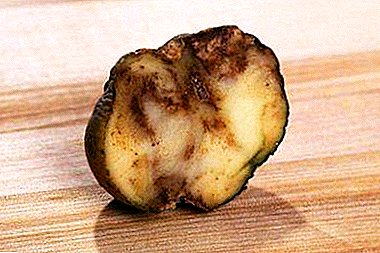 Fusarium appears as a result of the spread of fungal spores in storage. They live in the soil and a few months later settled in places damaged by potatoes. Therefore, this disease can often be found in the second half of the shelf life.
Fusarium appears as a result of the spread of fungal spores in storage. They live in the soil and a few months later settled in places damaged by potatoes. Therefore, this disease can often be found in the second half of the shelf life.It looks like this:
- Brown spots appear, then the peel gathers in folds.
- Inside the tuber a cavity is formed, covered with a white fluffy layer: a mycelium.
- Finally, it shrinks.
- Ring rot can be detected by cutting the tuber: inside you will see yellowing and softening of the fabric in the form of a ring. Subsequently, the source of infection may turn brown and harden to form voids. The disease is not transmitted through the soil. The infection develops slowly and is transmitted through the germinated plant to the tubers of the next crop.
- Scab caused by fungus and spreads in the ground. It looks like a rash on the peel in the form of black specks or warts. For humans, infected potatoes are harmless, but less nutritious: the level of starch in it is significantly reduced.
The cause of the growth of the fungus can be:
- improper fertilization;
- heat;
- waterlogging.
- Darkening of the pulp in itself is not a dangerous disease. It may occur due to improper combination of nutrients in the soil: an excess of nitrogen or a lack of potassium. In addition, the flesh may darken as a result of frost.
To prevent this, it is necessary to harvest in time and maintain the optimum temperature in the cellar, above 0 degrees. This is important to do, because it is easier for different types of rot to settle on weakened by frost darkened tubers.
- Ferrous spotting or rustiness looks like rusty spots in the flesh, which can be seen when cut. This disease is not contagious, the future harvest is also not transmitted.
It arises from:
- improper soil composition, in particular, excess iron and aluminum;
- insufficient phosphorus;
- dryness and heat also contribute to the development of glandular spotting.
It is possible to prevent its occurrence only during the growth of plants with the help of proper fertilization of the soil and sufficient watering.
- Potato hollowness - These are voids that can appear inside large potatoes. It is safe to eat such a product, and it is also impossible to get infected with this disease. Cavities arise because external tissues grow faster than internal ones, and gaps arise between them.Such potatoes are stored worse, and it is easier to settle in it for pathogenic bacteria. Therefore, it is important to monitor the composition of the soil and fertilizer when growing plants to prevent duplicity.
Tips on how to properly store
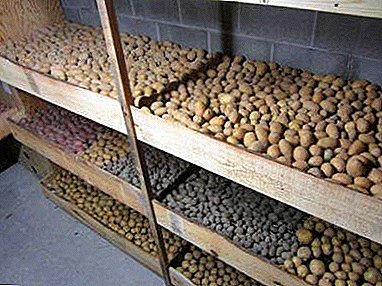 Prepare storage containers that allow the crop to be well ventilated.
Prepare storage containers that allow the crop to be well ventilated.- Find a dark room in which you can provide the optimum temperature (about where to store the potatoes, we wrote here, and about what temperature is needed for this, described here.
- Carefully sort the potatoes and discard the tubers with damage and rot.
- Some gardeners recommend treating the storehouse with copper sulphate or other substances to combat bacteria and fungi.
- You can bathe the tubers in a weak solution of potassium permanganate or brilliant green for disinfection.
- Clean the potatoes from the soil and dry.
If the potatoes were grown properly, careful preparation and compliance with all storage conditions will allow him to lie through the winter.


 Fusarium appears as a result of the spread of fungal spores in storage. They live in the soil and a few months later settled in places damaged by potatoes. Therefore, this disease can often be found in the second half of the shelf life.
Fusarium appears as a result of the spread of fungal spores in storage. They live in the soil and a few months later settled in places damaged by potatoes. Therefore, this disease can often be found in the second half of the shelf life. Prepare storage containers that allow the crop to be well ventilated.
Prepare storage containers that allow the crop to be well ventilated.

